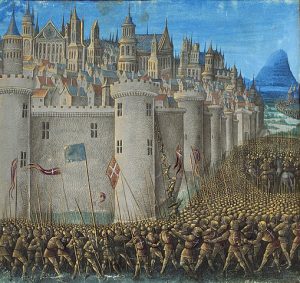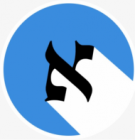By the 10th century and later until the end of the 15th century, the map of the Jewish settlement had changed completely in comparison to biblical times and the Roman Empire times. Most of the Jewish people did not reside in the Land of Israel or in the Middle East any longer. TWO new cultural Jewish centers emerged in Europe – one in Spain (‘Sefarad’ {ספרד} in Hebrew) and the other in Germany (‘Ashkenaz’ {אשכנז} in Hebrew).
The Jewish cultural world in Spain was the dominant one during the Middle Ages. The Hebrew language and its culture were at their ‘golden age’ and it is mostly known for its unique style of medieval Hebrew poetry.

Spain was the leading Jewish cultural center of that time, but it does not mean the Jews in Germany and central Europe did not practice Hebrew at all. On the contrary, they advanced a different genre of Hebrew literature – the ‘Responsa’ literature.
The ‘Responsa’ literature in Hebrew is called ‘She’elot Ve-Teshuvot’ {שאלות ותשובות} (‘Questions and Answers’) but is mostly known by its abbreviated name ShuT {שו”ת} (pronounced as ‘Shoot ‘). It is a part of the rabbinic literature focused on Jewish law and ways of conduct (encompassing all different aspects of the Jewish life) and formulated in a question and reply format– hence its name.
Both Jewish centers in Spain and Germany have witnessed a new phase in the development of Hebrew – a phase which is characterized by a major foreign influence on the Hebrew language and its culture. During this time, a significant amount of knowledge exchange occurred between Christian Europe and Islamic Spain and the Middle East. This exchange took the forms of literature, science, philosophy and poetry.
The influence of this cultural exchange was manifested, among others, in a large amount of Hebrew manuscripts across a very wide spectrum of fields and topics. During this time, one can find Hebrew manuscripts about philosophy, algebra, astronomy, medicine, geography and even botany and zoology – all written in Hebrew.
In addition to that, Jews also translated foreign literature into Hebrew. In fact, the Hebrew translation of both ‘Sinbad the Sailor’ (‘Sinbad Ha-Malach’ {סינבד המלח} in Hebrew) and ‘The Story of King Arthur’ (‘Ha-Melech Artur’ {המלך ארתור} in Hebrew) were two popular books among readers of the Medieval Jewish world!
